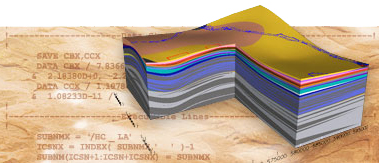
STOMP User Guide
Subsurface Transport Over Multiple Phases

STOMP User Guide
Subsurface Transport Over Multiple Phases
Additional Documentation
The guides listed and available here were written for scientists and engineers with an understanding of multiple-phase hydrologic systems, including concepts of thermodynamics, computational fluid dynamics, thermodynamics, relative permeability-saturation-capillary pressure theories, and reactive transport. The authors further assumed that the reader would be familiar with the computing environment on which the simulator would be compiled and executed. All guides listed here are PDF documents that were developed prior to the STOMP Online User Guide. While the theory and many of the capabiliites documented in these reports still apply, please note that these documents may be outdated. Users should consult the online user guide for current documentation of STOMP.
The Theory Guide describes the governing equations, constitutive relations and numerical solution algorithms that comprise the simulator.
The STOMP User's Guide describes the general use, input file formatting, compilation and execution of the simulator. The User Guide Appendices provide detailed input specifications and examples.
The User Guide Appendices can be found here.
The STOMP-CO2 and -CO2E User's Guide describes the theory, use, and application of the STOMP-CO2 and STOMP-CO2E operational modes.
The Addendum for soil-vegetation-atmosphere transfer describes the theory and application of the simulator to sparsely vegetated surfaces while considering ponding, runoff, evaporation, infiltration, and plant transpiration.
The Addendum for ECKEChem describes the theory, use, and application of the ECKEChem (EquilibriumConservation-Kinetic Equation Chemistry) reactive transport package for the STOMP simulator.
The Application Guide provides instructive examples in the application of the simulator to classical groundwater problems.